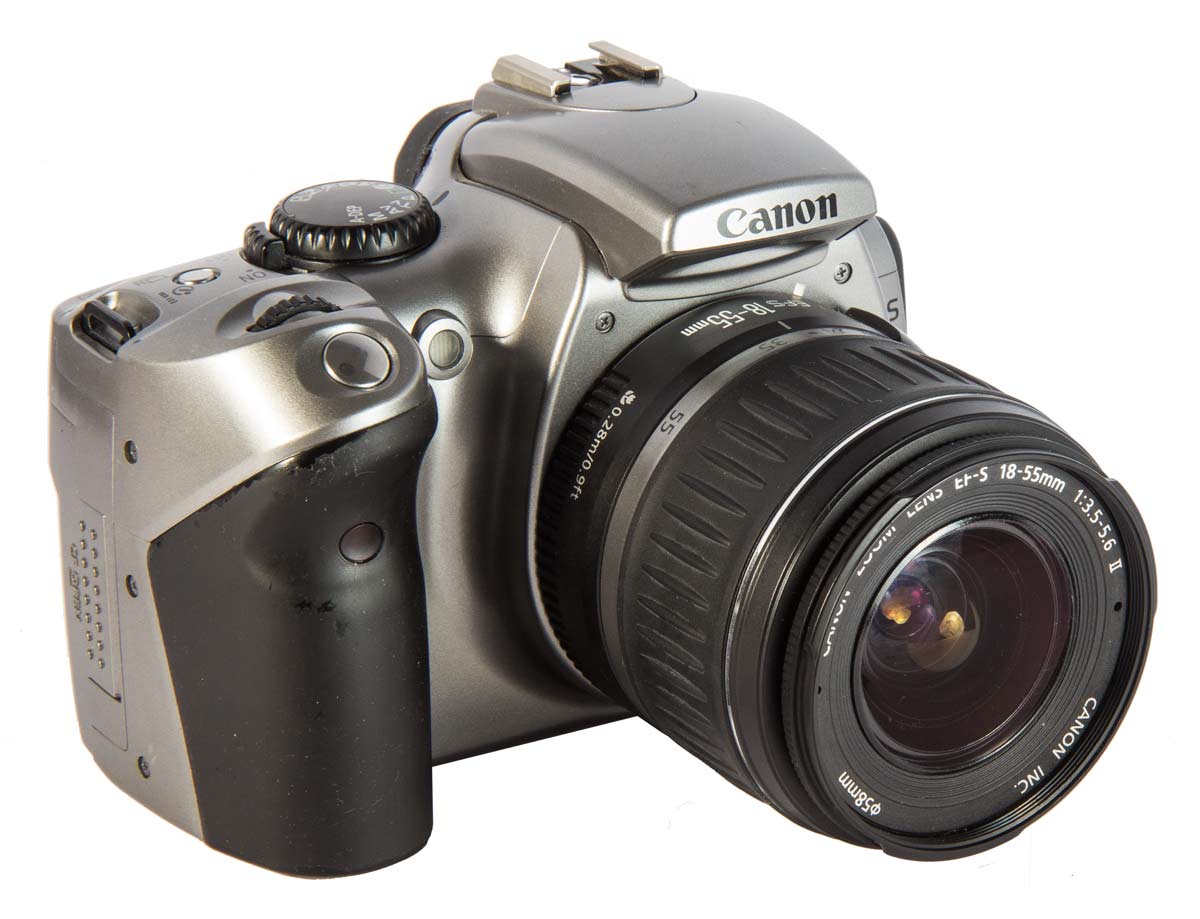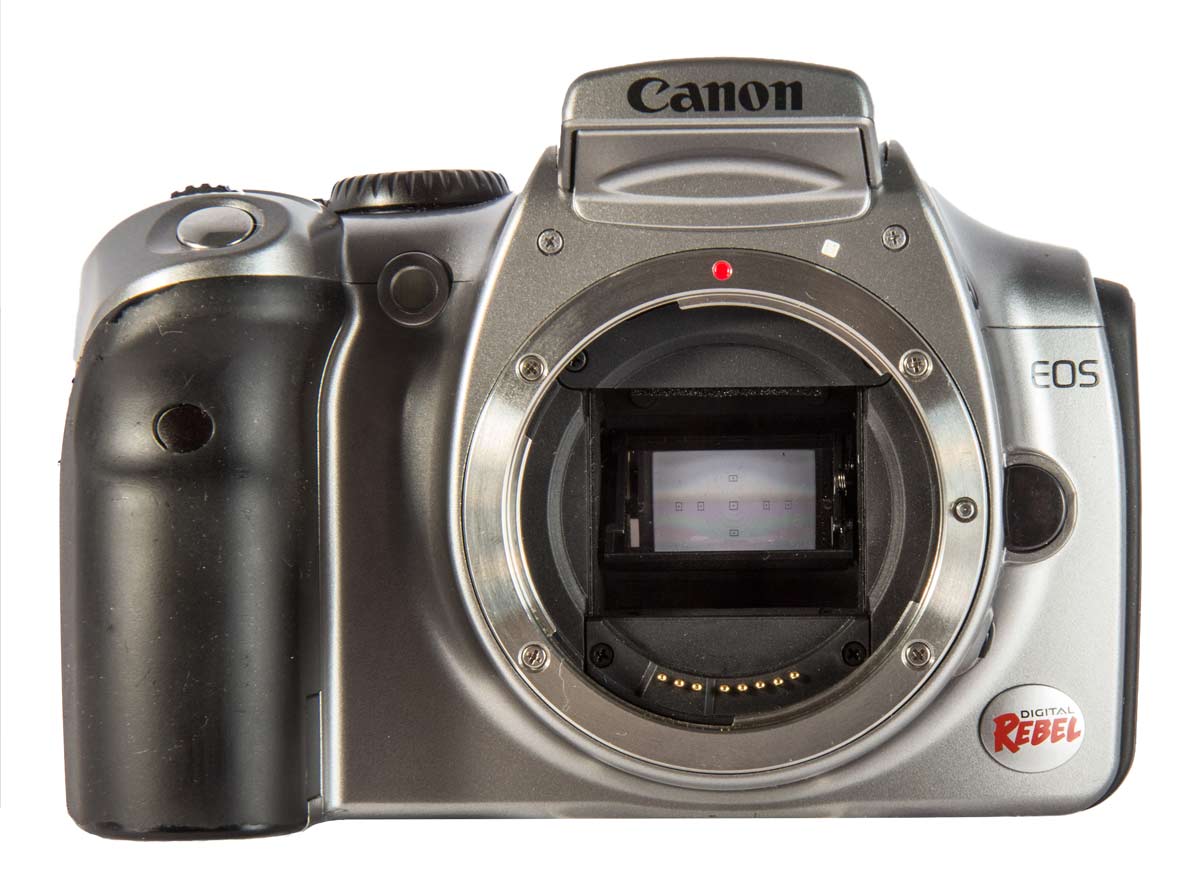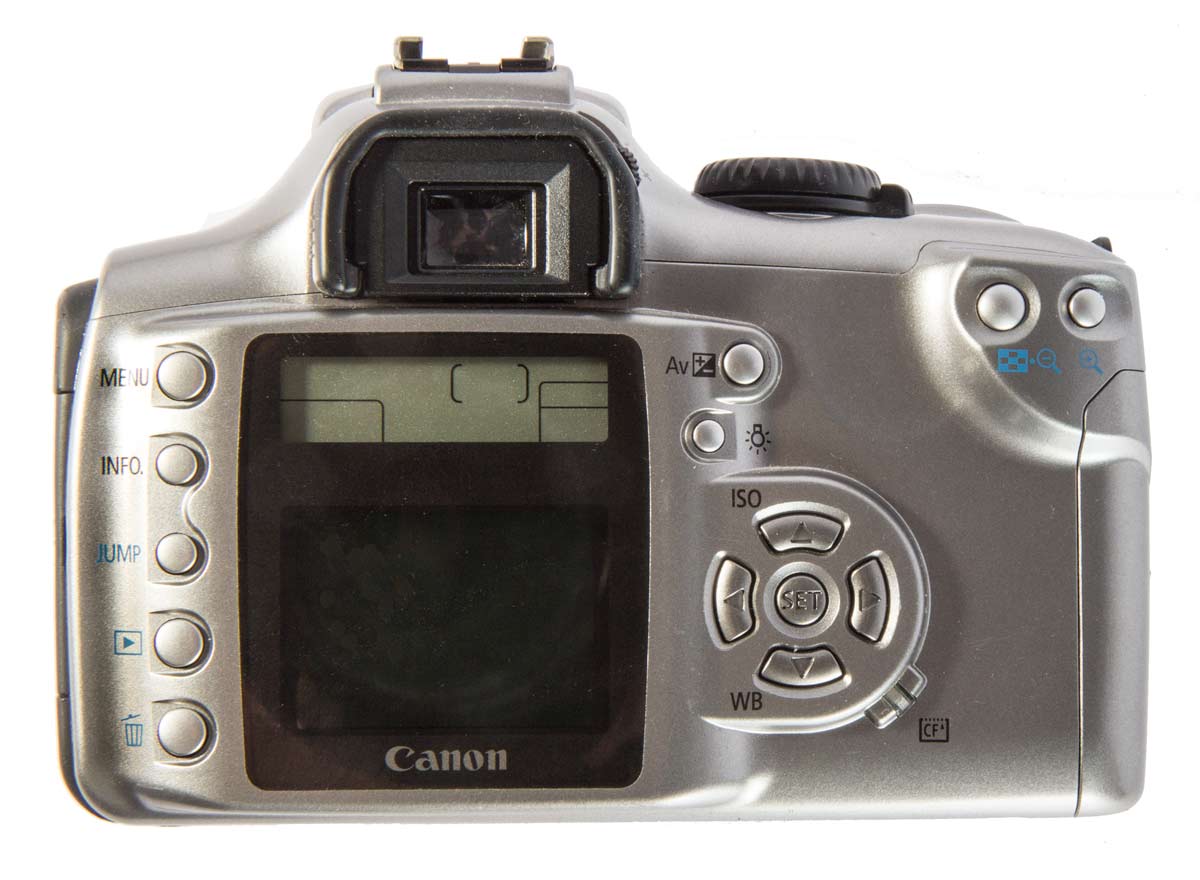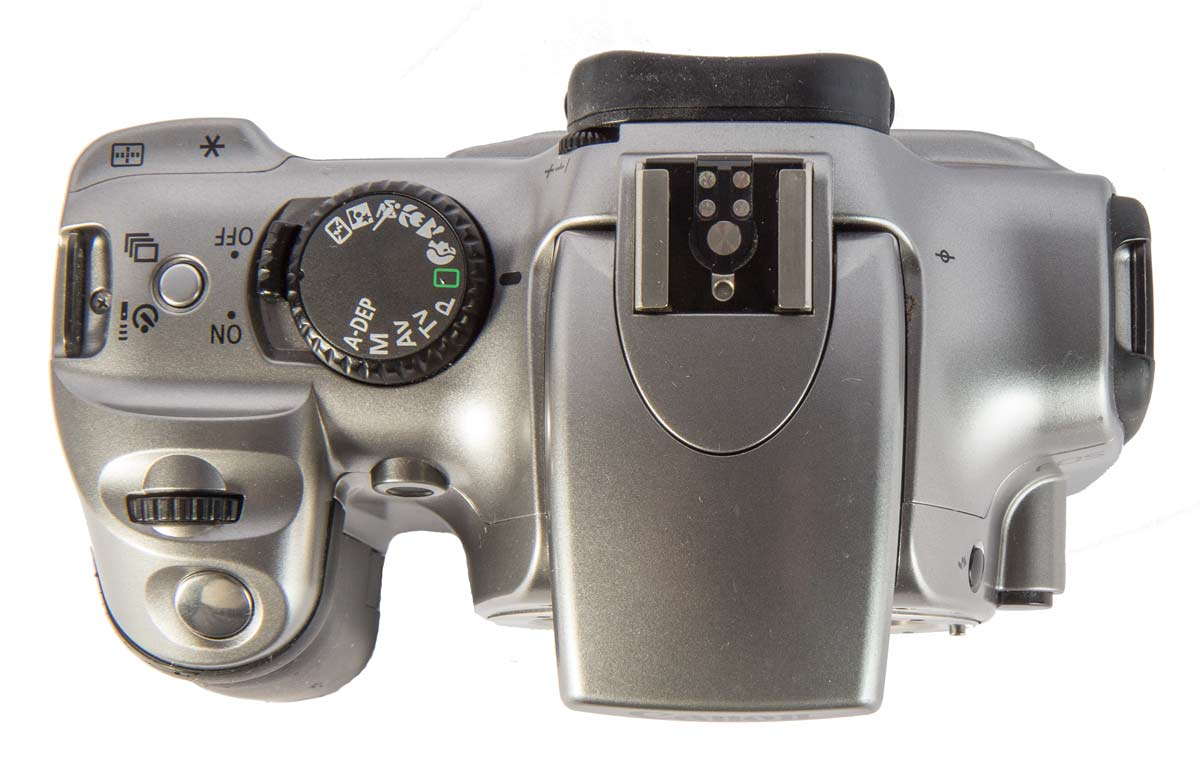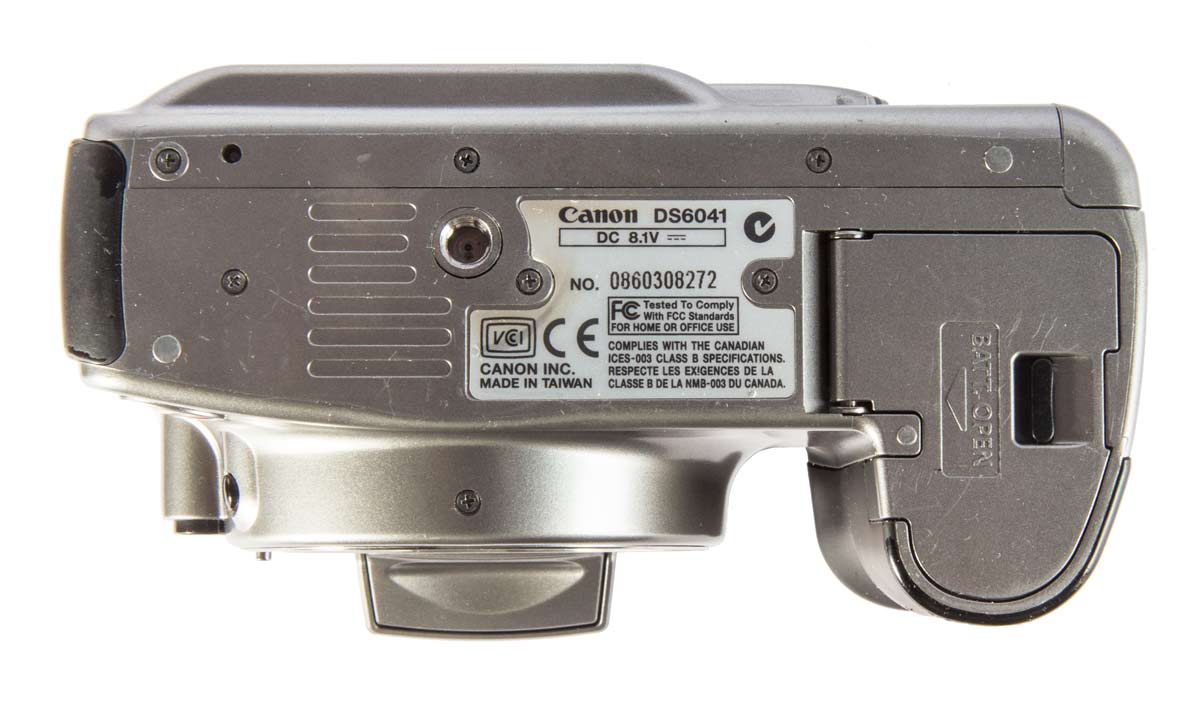My silver EOS Digital Rebel with its original EF-S 18-55mm kit lens. This camera also came in all black which I actually prefer. It was only 6.3 mpx but they were good pixels and the images were great.And best of all, it accepts all of Canon’s EOS lenses.
EOS Digital Rebel
The First Digital SLR under $1,000
On the 20th of August 2003 Canon announced the Digital Rebel (A.K.A. EOS 300D in Europe and the EOS Digital Kiss in Japan and was also known as the DS6041) and shocked the camera world: it was priced at $899.00 USD, considerably below other digital cameras with equivalent specifications at that time. It was the first digital DSLR to break the $1000.00 price barrier. For an additional $100.00 it came with the original EF-S 18-55mm kit lens. The camera was a fundamentally important development in placing digital DSLR’s in the hands of many more consumers on tight budgets.
This camera was based on the EOS 10D and its 6.3 megapixel CMOS sensor. Although offering a rich feature set, manufacturing costs were kept to a minimum by the use of polycarbonate (plastic) throughout and the use of a pentamirror viewfinder rather than the more expensive pentaprism. Additionally, manufacturing was moved to Taiwan to take advantage of better wage rates.
The Digital Rebel was the first Canon body to support the new EF-S ( S is for “short back focus”) lens type. This new lens mount allowed the rear element to fit further back in the camera body to be closer to the image sensor. The result was a lens that could only be used with the APS-C sensor but which could be made lighter and simpler because of the resulting relaxed design parameters.
The lens on this EOS Rebel is the kit lens for the Rebel XT, the next Rebel in this series. The original kit lens, the EF-S 18-55mm f/3.5-5.6, looks identical.
In North America this camera came with a silver body. In Japan it was also available in black and in Europe black versions of the 300D were released a year or more after its introduction.
The viewfinder image is rather small (0.8x) and has 95% coverage. The relatively small image size is probably a consequence of using a pentamirror system rather than a pentaprism. Though a pentamirror is lighter and cheaper than a pentaprism, it also loses more light and so to compensate for this and to brighten the image, the image has to be made smaller.
Although Rebel was Canon’s most basic, entry level, DSLR this camera is surprisingly satisfying to hold. It has weight and a solid feeling that is very comforting.
There is a rear mounted 1.8″ LCD screen for image display, with 118,00 displayed pixels. It gives 100% coverage of the image and there are 5 levels of brightness.
The mirror in the Rebel camera looks small compared to the large EF lens mount ring. This has allowed the design to be so light and small.
On top is the hot shoe is the center and to the right, left in the picture, are the Mode Dial, Main Dial and shutter button, all identified on pg. 10 of the Manual.
For the operating instructions have a look in the Instruction Manual. If you are familiar with the operation of the latest Canon DSLR’s you won’t need the manual.
Above the LCD image monitor screen is a smaller LCD panel to display camera operating parameters. Having it here and not on the top deck leaves the top of the camera with more room for the main dial, mode dial and shutter button. It also allows for smaller outside dimensions of the camera body.
This Rebel uses the BP-511 battery pack and battery charger CB-5L.
The Digital Rebel takes any of the current Canon Speedlites which attach via the hotshoe. The Digital Rebel supports E-TTL flash capability and the built in flash is E-TTL (this means there is a preflash used for metering before the main flash fires). There is no PC socket for external flash connection.
Many of the standard Canon EOS SLR accessories fit the Digital Rebel, from remote releases, through extension tubes to external Speedlites. For more detailed information on the features of this camera refer to the Instruction Manual below.
A full review of the Canon Digital Rebel can be found on dpReview.com. They cover the details better than ever I could.
So How Does it Shoot?
When you pick this camera up the first thing you will notice is that it is small and it is light. You can carry it on your shoulder and forget it it there. But it is big enough to fill your hands.
The weight comes about through the extensive use of plastics in the lens and the camera body. The resulting “plastic feel” is pronounced. I suspect that as a result of all this plastic that the body is not terribly strong. And of course it is not weather sealed so water is to be avoided.
All of that said, when you begin to take pictures you realize that you have a serious camera in your hand. With the kit lens focus is rapid and smooth. And the images are excellent if somewhat megapixel challenged. But then this is an older camera.
I am not posting any sample images here but I did use the same lens shown in my discussion of the Rebel XTi and posted sample images there. Everything I said there about impressions while using the camera can be applied here. Essentially the same experience.
So, to sum up: great little camera and fun to use. The EF lenses are an added bonus. So much to chose from!
This website is the work of R. Flynn Marr who is solely responsible for its contents which are subject to his claim of copyright. User Manuals, Brochures and Advertising Materials of Canon and other manufacturers available on this site are subject to the copyright claims and are the property of Canon and other manufacturers and they are offered here for personal use only.


